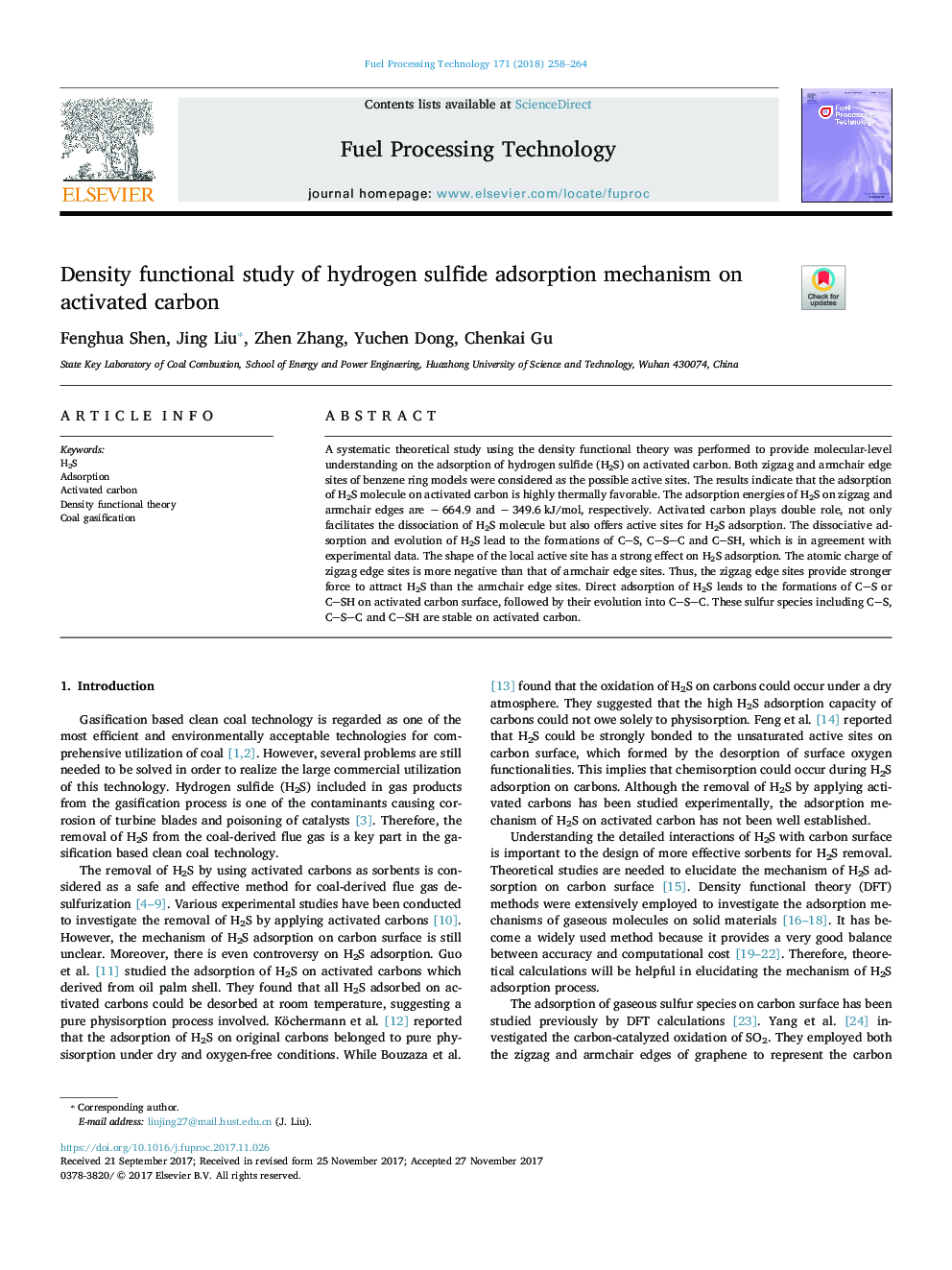| Article ID | Journal | Published Year | Pages | File Type |
|---|---|---|---|---|
| 6656523 | Fuel Processing Technology | 2018 | 7 Pages |
Abstract
A systematic theoretical study using the density functional theory was performed to provide molecular-level understanding on the adsorption of hydrogen sulfide (H2S) on activated carbon. Both zigzag and armchair edge sites of benzene ring models were considered as the possible active sites. The results indicate that the adsorption of H2S molecule on activated carbon is highly thermally favorable. The adsorption energies of H2S on zigzag and armchair edges are â 664.9 and â 349.6 kJ/mol, respectively. Activated carbon plays double role, not only facilitates the dissociation of H2S molecule but also offers active sites for H2S adsorption. The dissociative adsorption and evolution of H2S lead to the formations of CS, CSC and CSH, which is in agreement with experimental data. The shape of the local active site has a strong effect on H2S adsorption. The atomic charge of zigzag edge sites is more negative than that of armchair edge sites. Thus, the zigzag edge sites provide stronger force to attract H2S than the armchair edge sites. Direct adsorption of H2S leads to the formations of CS or CSH on activated carbon surface, followed by their evolution into CSC. These sulfur species including CS, CSC and CSH are stable on activated carbon.
Related Topics
Physical Sciences and Engineering
Chemical Engineering
Chemical Engineering (General)
Authors
Fenghua Shen, Jing Liu, Zhen Zhang, Yuchen Dong, Chenkai Gu,
